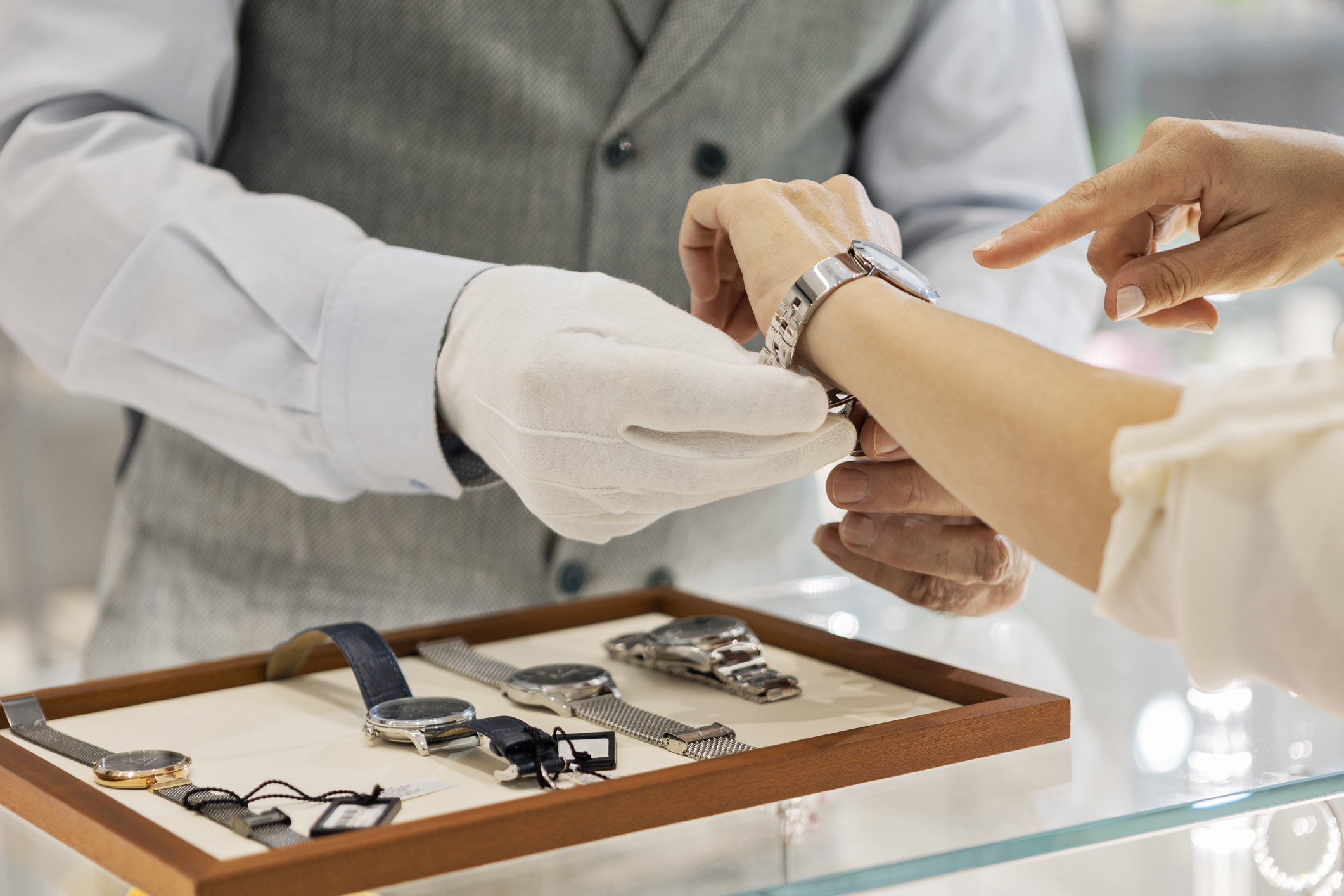‘What Was I Thinking?’ The Big-Ticket Items People Regret
People spend a lot of money on all sorts of things, only to later ask themselves: Why?
While it may be true that money can’t buy happiness, that doesn’t stop people from trying.
And then wishing they hadn’t.
Many of us have had a big-ticket expenditure that we later come to regret. Maybe it’s something meant to convey status, which we realise later did nothing of the sort. Maybe it was to fulfil dreams of a luxury lifestyle, only to discover that we’ve bought a bottomless money pit.
We asked Wall Street Journal readers to share their stories of pricey purchases that ultimately led to disappointment. Below are some of their stories and reflections—with some free advice to their younger selves.
The wristwatch of his dreams
“It was back in day of wingtip shoes, white shirts and red ties,” says Bryan Desloge, who began his career at IBM in 1984. And like many rookie employees, Desloge wanted to fit in. “I bought suits. I took my earring out. I cut my hair and I registered in the Republican Party,” he says. To complete the look, he paid over $7,000 for the wristwatch of his dreams—a Rolex Submariner. It was a hefty sum, considering he was making roughly $18,000 a year.
Now 64 and retired, Desloge says his younger self saw the stainless-steel watch as a status symbol. “The older guys had nice dress watches already, while I wore a Casio or a Timex.” Just two years after buying the Rolex, however, Desloge realised the timepiece was impractical for him. “The Rolex is great, but I don’t want to look at a clock face,” he says, “and the glow-in-the-dark hands are hard to read at night.”
Desloge, who lives in Tallahassee, Fla., recently tried to give the Rolex to his son, who turned him down. So it remains tucked away in favor of a Garmin smartwatch, which has a fitness tracker, alerts and email, among other features. Purchased for about $500, the Garmin can multitask in ways his Rolex cannot. “I will probably wear that watch for the rest of my life,” Desloge says.
Cabin fever
The family called it “the little brown house,” says Michael Kotas of his vacation cabin in the mountains overlooking Tucson, Ariz. In 2005, Kotas and his wife paid $120,000 for the 1950s cabin, and it needed a lot of work.
“We bought it from an older couple, who had dark rugs and wood paneling,” says Kotas, who is now in his mid-60s and retired from a job in technology sales. He redid the cabin “with a cool Manhattan vibe,” updated the electrical wiring and corrected a flooding issue in the basement. In all, Kotas estimates he spent $60,000 in upgrades.
But his financial headaches were far from over.
Even though Kotas owned the cabin, the federal government owned the land it sat on, since it was located within the Coronado National Forest. Leasing the land cost $800 a year when the cabin was purchased, but eventually grew to $3,600 a year by the time it sold.
During that time, two fires came within 100 yards of the cabin, jacking up Kotas’s fire-insurance premiums. Then, a species of bark beetle attacked ponderosa pines there, and the Forest Service required cabin owners to remove infested trees around their property, costing $1,000 to $1,200 a pop. “I counted all my trees around my house and thought, ‘I can’t afford this.’ ”
Over time, Kotas’s children didn’t want to go to the cabin anymore, saying “there was nothing to do,” he says. “We ended up spending about five nights a year there for the last several years.” Kotas, whose year-round home also is in Tucson, came to the realisation that he wasn’t getting his money’s worth. “It became an albatross,” he says.
The tipping point came when a man parked his truck just 100 feet from the cabin and lived out of his vehicle on the side of the road. Kotas sold the cabin in 2022 for $195,000.
“I would probably never buy a vacation home again,” he says. “It was a tough lesson to learn. I wish the [new] buyers well, but all I can say is, ‘Good riddance!’ ”
RV to nowhere
After retiring from a career in ophthalmology, Gordon Preecs bought a large pickup truck in 2013 and a 22-foot travel trailer in 2017 with the dream that he and his wife, Connie Preecs, would visit national parks around the country. Combined, the new vehicles cost around $50,000.
Living in Seattle at the time, the couple started out by taking the RV on short trips, such as an event for woodcarvers in Washington state. It didn’t take long for them to feel pinched in a 120-square-foot RV. “I thought we’d have our own hotel” with an RV, says Preecs, who is now 75 and living in Round Rock, Texas. “But we had to just shove things in there. The kitchen counter was hand’s breadth wide, and the bathroom was like a phone-booth shower. If I dropped the soap, I couldn’t pick it up.”
Three years after purchasing the trailer, Preecs and his wife relocated to Texas to be closer to their grandchildren. Still, they were able to visit Grand Teton and Yellowstone national parks in the Northwest. That’s when they felt the financial pinch of RV ownership.
“At 6 miles per gallon and $60 to $80 a night at RV parks, the expenses really added up,” he says. “We found it was an inefficient way to travel.” Some of the RV parks are located in funky, backwater places, he says. And setup and breakdown at every stop became a hassle. “You want to be free, but you’re not.”
In 2020, they sold the trailer, which had less than 5,000 miles of use, and the pickup for a combined $32,000. With the proceeds, Preecs bought a Tesla.
Outfitted and outwitted
As a vintner in California, much of Pam Starr’s work takes place outside among the grape vines. “I live in jeans and winemaker vests, T-shirts and sometimes boots,” says the 63-year-old. “So I can tear my clothes on a vine or get barrel slime on me” and it doesn’t really matter.
A few years ago, a well-heeled friend with an eye for fashion convinced Starr, who lives in Napa, to join her in San Francisco for a meeting with her couturier—a person who creates luxury clothing to the client’s specifications. The friend had told Starr that she wouldn’t have to buy anything, but this particular couturier was very persuasive, Starr recalls.
For example, the couturier held up a gauzy swimsuit coverup with white sequins and said, “You have to wear this swimsuit coverup by the pool.” Starr paid $1,800 for a custom coverup, but later it hit her: “I don’t wear a coverup when I’m at the pool because I’m actually in the pool.” To this day, it has never been worn. Starr says she spent another $1,800 for an off-the-shoulder silk shirt with three-quarter length sleeves.
The quality of the clothing was low, Starr says. “That silk shirt turned out to be my most disappointing piece,” she says. It didn’t clean well, and hasn’t retained its shape. Many of the pieces she purchased haven’t held up well, she says, even though she rarely wears them. “Out of the 15 items I had made for me, I loved maybe three,” Starr says. “That’s more than $20,000 worth of clothes, and I should have gotten more out of them.”
If she could go back in time, Starr says, she would say to herself, “ ‘Listen, Pam. Pick two things and start slowly. If you like them, you can expand into other things.’ ” Also, she would pause to ask herself how often she would actually wear the clothing.
“Because of a friend, I ended up in a couture shop,” Starr says. “In that world, it’s uncharted territory for me. The couturier pulls you in really hard.” Knowing what she knows now, Starr says, “if I needed someone to design a gown for me, I wouldn’t go back there. I would go to a seamstress locally.”
 Copyright 2020, Dow Jones & Company, Inc. All Rights Reserved Worldwide. LEARN MORE
Copyright 2020, Dow Jones & Company, Inc. All Rights Reserved Worldwide. LEARN MORE
This stylish family home combines a classic palette and finishes with a flexible floorplan
Just 55 minutes from Sydney, make this your creative getaway located in the majestic Hawkesbury region.
Continued stagflation and cost of living pressures are causing couples to think twice about starting a family, new data has revealed, with long term impacts expected
Australia is in the midst of a ‘baby recession’ with preliminary estimates showing the number of births in 2023 fell by more than four percent to the lowest level since 2006, according to KPMG. The consultancy firm says this reflects the impact of cost-of-living pressures on the feasibility of younger Australians starting a family.
KPMG estimates that 289,100 babies were born in 2023. This compares to 300,684 babies in 2022 and 309,996 in 2021, according to the Australian Bureau of Statistics (ABS). KPMG urban economist Terry Rawnsley said weak economic growth often leads to a reduced number of births. In 2023, ABS data shows gross domestic product (GDP) fell to 1.5 percent. Despite the population growing by 2.5 percent in 2023, GDP on a per capita basis went into negative territory, down one percent over the 12 months.
“Birth rates provide insight into long-term population growth as well as the current confidence of Australian families,” said Mr Rawnsley. “We haven’t seen such a sharp drop in births in Australia since the period of economic stagflation in the 1970s, which coincided with the initial widespread adoption of the contraceptive pill.”
Mr Rawnsley said many Australian couples delayed starting a family while the pandemic played out in 2020. The number of births fell from 305,832 in 2019 to 294,369 in 2020. Then in 2021, strong employment and vast amounts of stimulus money, along with high household savings due to lockdowns, gave couples better financial means to have a baby. This led to a rebound in births.
However, the re-opening of the global economy in 2022 led to soaring inflation. By the start of 2023, the Australian consumer price index (CPI) had risen to its highest level since 1990 at 7.8 percent per annum. By that stage, the Reserve Bank had already commenced an aggressive rate-hiking strategy to fight inflation and had raised the cash rate every month between May and December 2022.
Five more rate hikes during 2023 put further pressure on couples with mortgages and put the brakes on family formation. “This combination of the pandemic and rapid economic changes explains the spike and subsequent sharp decline in birth rates we have observed over the past four years,” Mr Rawnsley said.
The impact of high costs of living on couples’ decision to have a baby is highlighted in births data for the capital cities. KPMG estimates there were 60,860 births in Sydney in 2023, down 8.6 percent from 2019. There were 56,270 births in Melbourne, down 7.3 percent. In Perth, there were 25,020 births, down 6 percent, while in Brisbane there were 30,250 births, down 4.3 percent. Canberra was the only capital city where there was no fall in the number of births in 2023 compared to 2019.
“CPI growth in Canberra has been slightly subdued compared to that in other major cities, and the economic outlook has remained strong,” Mr Rawnsley said. “This means families have not been hurting as much as those in other capital cities, and in turn, we’ve seen a stabilisation of births in the ACT.”
This stylish family home combines a classic palette and finishes with a flexible floorplan
Just 55 minutes from Sydney, make this your creative getaway located in the majestic Hawkesbury region.






















